Morning Routine for Baby-Led Weaning
In this episode we're talking about:
- Why you don't mess with baby's nap or milk schedule in Phase 1 of BLW
- When you drop a milk feed and start the day with food in Phase 2 of BLW
- How to clean up the mess efficiently without causing a feeding aversion
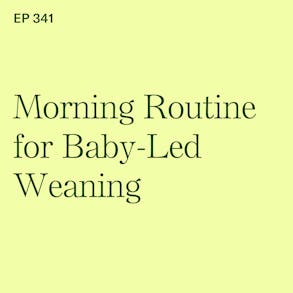
LISTEN TO THIS EPISODE
Episode Description
What does the morning look like when you start introducing solid foods? In this episode we’re exploring two different morning routine scenarios with how to layer solid food into your baby’s milk and nap schedule.
Links from this Episode
- Branch Basics non-toxic cleaning supplies that actually clean the baby-led weaning mess! Get 15% off starter kits with affiliate discount code KATIE15 < < Click Here to Shop Branch Basics > >
- Baby-Led Weaning with Katie Ferraro program with the 100 First Foods™ Daily Meal Plan, join here: https://babyledweaning.co/program
- Baby-Led Weaning for Beginners free online workshop with 100 First Foods™ list to all attendees, register here: https://babyledweaning.co/baby-led-weaning-for-beginners
Other episodes related to this topic:
- Episode 55 - How to Drop a Milk Feed https://blwpodcast.com/episodes/55
- Episode 211 - How to Schedule Milk Feeds with Solid Food for Baby-Led Weaning https://blwpodcast.com/episodes/211
- Episode 235 - When to Move Milk Behind Food with Nicole Boehm https://blwpodcast.com/episodes/235
- Episode 185 - 6-7 Months Old Babies: Sample BLW Feeding Schedule https://blwpodcast.com/episodes/185
- Episode 187 - 8-9 Months Old Babies: Sample BLW Feeding Schedule https://blwpodcast.com/episodes/187
- Episode 189 - 10-11 Months Old Babies: Sample BLW Feeding Schedule https://blwpodcast.com/episodes/189

Latest Episodes
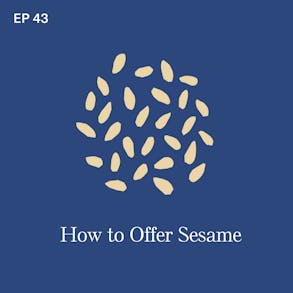


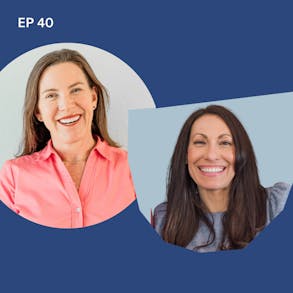
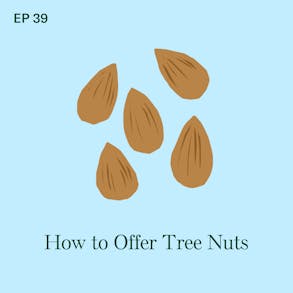
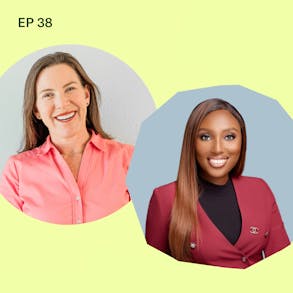
Katie Ferraro (1s):
What are the best foods for starting baby-led weaning? Now, there's no right or wrong food for starting solid foods, but if you're looking for ideas, I have a free feeding guide called 10 Easy Starter Foods for baby-led weaning and I packed this free feeding guide with two full weeks of new solid foods your baby can eat complete with tips on how to make them safe to lower choking risk. You can download the 10 Easy Starter foods for Baby-led Weaning at https://fortifiedfam.com/starterfoods. That's https://fortifiedfam.com/starterfoods. Thank you so much for listening to this podcast. I know you have a lot of options when it comes to parenting content and it means so much to me that you're here to learn about starting solid foods safely.
Katie Ferraro (41s):
I do have a request and I wanted to ask if you'd please leave me a written review of this show on Apple Podcast. Your honest reviews are so important for helping the show get found by other parents and caregivers, and it just takes about 30 seconds to complete. If you have any future episode ideas, drop 'em in the review too. I read every single review and I really appreciate you. Thanks so much. And in the second phase of baby-led weaning, so the second eight weeks, the morning routine does look a little bit different because it's at this point where you're starting to drop a milk feed And. while you can certainly pick whichever milk feed you want to drop first, I've found the most success with dropping that morning milk feed first where The baby wakes up and comes directly to the table for a morning meal.
Katie Ferraro (1m 22s):
And it's fine for babies to start their day with the solid foods at which this point, we're now moving the milk behind the meals and that really, really helps your baby take it to the next level with their ability to be getting more of their nutrition from food and less from milk. Hey there. I'm Katie Ferraro, registered dietitian, college nutrition professor and mom of seven specializing in baby-led weaning here on The Baby-Led Weaning Made Easy podcast. I help you strip out all of the noise and nonsense about feeding, leaving you with the confidence and knowledge you need to give your baby a safe start to solid foods using baby-led weaning.
Katie Ferraro (2m 3s):
I don't know about you guys, but I absolutely love just lurking on other people's morning routines, like even if it's totally unrelatable to my own personal life, there's just something about like, oh, that's interesting. I wouldn't have done that. Never thought about that. That definitely doesn't happen at my house. But I feel like a routine can really help when you're transitioning to solid foods. And that's why I'm always sharing feeding schedules and different ideas for meal plans. And this is like for the parents, we're like, Katie, I just need a plan when it comes to solid foods. So in today's episode, we're going to do morning routine for baby-led weaning. This is not for you to feel bad about your own routine.
Katie Ferraro (2m 45s):
This is not for you to be like, oh my gosh, I need to emulate every single thing in this podcast episode. It's just some ideas of what it might look like when you're starting solid foods. And I'm gonna break it up into the two different distinct phases of baby-led weaning that we teach. We teach at the beginning of our programs phase one, which is the first eight weeks of baby-led weaning when you're usually when your baby is six, seven months of age. And then also what it looks like in phase two, which is the second eight weeks of baby-led weaning, which for most babies will be eight or nine months of age. But if you got a late start to starting solid foods, it's eight weeks-ish after you started your first foods. When you move into phase two. If you wanna learn more about my programs in moving your baby through the different stages of baby-led weaning, I teach about this in my free online workshop called Baby-Led Weaning for Beginners.
Katie Ferraro (3m 35s):
You can sign up for this week workshop times at https://babyledweaning.co. That's the place you can go to learn all about the programs, sign up for one of them if it fits for you. And if you're getting started with solid foods, here's a little info about morning routines. I was actually just watching, I was trying not to watch Instagram and then like I swear I'm, I'm only gonna go in, I'm gonna check the caption for this next post that we're doing and then I find myself down a rabbit hole. But I think Instagram knows, I love morning routines cuz there was a dad emulating if he was his 14 year old and he was responding to the schedule that the parents had for the 14 month old and it was fabulous. This is not going to be nearly as funny because I'm trying to provide you with practical actionable advice, but I am definitely deep into that side of social media scouring other people's boarding routines.
Katie Ferraro (4m 22s):
So here are some tips for boarding routine for phase one. The first eight weeks of baby-led weaning, it's pretty easy you guys because my recommendation is not to change your baby's nap schedule or their milk schedule for the first eight weeks after starting solid foods. Okay? Your baby's not actually eating that much in phase one and so as a result you don't have to change a bunch of stuff the go about your usual morning routine, but you're like, well my morning routine did not involve solid foods. So do I have to feed in the morning? No. My recommendation is at six and seven months of age in phase one of baby-led weaning, try to offer solid foods one to two times per day.
Katie Ferraro (5m 4s):
You know your baby best, you know your schedule best. You figure out when that best works for you. My only suggestion with regard to timing though is I generally will not do the introduction of new potentially allergenic foods right before bedtime. Okay? Because if your child is going to have an allergic reaction to food, the vast majority of them will occur within minutes and up to no more than two hours following ingestion. So if you do it like right before bed at night and you're all going to bed and your baby has reaction, you won't be awake or alert to observe for them. So that's my only caveat there. Typical morning in phase one, wake up at whatever time you do change the baby, do your milk feed, right? That's infant milk, breast milk or formula.
Katie Ferraro (5m 44s):
Whatever your normal routine is, stick to that cuz it's working for you. I would suggest doing solid foods in the morning because then if it doesn't go well, you can always try again later in the day. Or if you wanna do a second attempt, you have the rest of the day left. If we're going to do solid foods in the morning, if your baby is bottle fed, my suggestion is to wait about an hour between the end of the milk feed and the beginning of the solid food feed. If your baby is breastfed volume wise, they're consuming significantly less than we typically see in a six month or seven month old bottle fed baby. And so the rationale here is that four babies who are starting solid foods, they're going to gag, right? If you've been studying about the transition to solid foods, you've learned that gagging is a good thing.
Katie Ferraro (6m 25s):
It's a sign that your baby is learning how to eat. But some babies who have particularly sensitive gag reflexes, if they gag on food, the gag can elicit a vomit. And if their belly is full of milk cuz they just finished a big bottle, they're gonna barf that milk right up, right emptying the contents of their stomach, which a little bit of vomiting is to be expected when you're starting solid foods, but vomiting at every meal, vomiting every day, certainly not. And we don't want your baby to start developing negative associations with food and feeding because they're vomiting every time. So we build in that pad for the bottle fed babies, most breastfed babies can come right off the boob, sit in the chair and eat. Okay? I have definitely worked with babies who are very sensitive gag reflexes who also would breastfeed and still need a little bit of a pad.
Katie Ferraro (7m 8s):
But for the most part, again cuz the volume is more coming outta the bottle than the breast, the notion there is that that pad that you wanna build in that's going to be more essential for the bottle fed babies. And there are some bottle fed babies who can do like a big old bottle eat food gag and they don't barf, but building in that little pad can help just empty their stomach a smidge so that it's not full of milk. In the event that they do gag, we don't want it to vomit.
Katie Ferraro (8m 38s):
Hey, we're gonna take a quick break, but I'll be right back. So we're gonna do the solid food. Okay? Most babies, our goal is to get them sitting in the highchair for somewhere between 15 to 20 minutes trialing that food. You're all fully aware that there is not much actual eating happening in the first few days and weeks of starting solid foods, but practice makes progress. So I teach a purees for a few days approach for parents who are very anxious about making that transition from an infant milk only diet to solid foods with baby-led weaning, we do purees for about three days. Again, I teach how to do that purees for a few days approach inside of my free workshop.
Katie Ferraro (9m 18s):
Baby-Led Weaning for Beginners, that's at https://babyleweaning.co. If that sounds like something that could help bridge you to solid foods, you definitely don't have to do it. We have tons of families who go right to the soft solid strips of food starting in day one, but my suggestion is try to get baby sitting there with the food for 15 to 20 minutes. What do you do? You don't get to piece out, sorry, You. Don't get to pick up your phone and start scrolling other people's morning routines. We need to observe our baby's at mealtimes. If your baby is going to choke, the choke will be silent, right? With the choke The baby turns blue or purple and there's no air passing through, you are not going to hear it. Okay? choking is a very rare but real risk. And I would remind you that there's no higher risk of choking if you start solid foods with a baby-led approach compared to conventional spoon feeding.
Katie Ferraro (10m 1s):
But in the event that your baby does choke and the risk for choking is higher earlier on because they're not familiar with or they're not proficient in managing all of these textures yet they're learning, okay, they're learning how to do this and they need you right there observing. But what they don't need you doing is what I would call micromanaging the whole eating situation. Marsha Dunn Klein calls it "excessive cheerleading" and I've been trying to use her term and give her credit for that. You do not need to be touching all the food and touching The baby and repositioning this spoon and moving them around that stresses the baby out. Put the food in the suction mat or the bowl, let the baby explore it. They might look at it for 10 minutes, they might smash it, they might smush it, they might move it around. They might pick some up.
Katie Ferraro (10m 41s):
They might even get it near their mouth. Let the baby be the one driving the eating experience. You have to remember your role, which is not to make your baby eat. The baby will ultimately determine how much or even whether they eat. Okay? So this is new to them. This is due to you. The goal is not to make them eat all the food. The goal is to give them ample space and time to learn how to eat. I would also encourage you not to wipe your baby or clean them up while they are trying to learn how to eat. Talk about this being a negative sensory experience for your baby. And as tempting as it is to want to move that oatmeal off the side of their mouth, baby needs to feel that oatmeal dribbling down the side of their mouth. It's not comfortable for them. And the next time your baby goes to eat oatmeal, they're gonna make a little tiny micro correction cuz they don't like the way it feels when it's running down the side of their face.
Katie Ferraro (11m 24s):
But they're never gonna learn how to do that if you're doing it for them. So stop doing the work for your baby and let your baby learn how to eat on their own. You're there, you're in charge of what they eat and where they eat and when they eat right, but you don't need to do anything about making them eat. Now as soon as that meal is over, my suggestion hightail it to the sink. I wanna do the cleanup when the food is wet. Cleaning dried oatmeal like I don't know what's worse dried oatmeal or dried yogurt. But if you can get that mess when it's wet, you're going to enjoy this process a little bit more and it's not going to ruin or destroy your entire morning. So what I do is when the meal is over, I remove the baby from the high chair. I go right to the kitchen sink. I put lukewarm water on running it. I'll have use my clean hands to cup the water, wipe the baby's face, wipe the baby's hands, use a clean towel to dry them, set baby in a safe space and then I will get to work cleaning up the mess.
Katie Ferraro (12m 15s):
Now what do you clean the baby with? I'm always interested in non-toxic household cleaners. The brand that I love and use in my own house and to clean up all the baby-led weaning mess is from Branch Basics. So Branch Basics makes non-toxic household cleaners. We've interviewed their founders here on the podcast. I love their story. I love their products because they actually get the baby-led weaning mess out and they smell nice. Like some of the non-toxic cleaners, I'm like, smells great, doesn't work or doesn't really smell great, cleans a little bit, but this is one that I'm like, huh, it actually like smells good and it's actually cleaning the mess and it's non-toxic. Not to mention it's very, very cost effective cuz some of the brands that are out there are just so expensive.
Katie Ferraro (12m 56s):
Like sorry, in real life I'm not gonna be using them. So if you want to check out the Branch Basics household cleaning supplies, I use their all-purpose cleaner. Actually we use the bathroom level concentrate as well. The way Branch Basics works, cuz you buy the liquid soap concentrate and then you dilute it with, I use like the filtered water from our tap. You can use distilled water, you can use regular water. Then at different dilution levels, they're different cleaners. So like very heavily diluted as the window cleaner, like the Windex replacement. Once I realized that Windex is really just like one drop of soap, I was like, dude, why have I been paying for Windex? Plus all the chemicals trying to avoid with Branch Basics, it's all water in like one drop of their soap concentrate and that's your window cleaner. So you use the same soap to make the bathroom cleaner, to make the all-purpose cleaner, to make the window cleaner.
Katie Ferraro (13m 39s):
I also use their dishwasher tabs. It's a separate product, but I love like just the base starter kit. If you wanna check it out my affiliate discount code KATIE15 works for a discount on all of the starter kits and they also have glass bottle starter kits. Don't sleep on those. Some parents like audio, I can't have glass bottles in my house, but they have these rubber bumpers on them that like my kids have dropped on the floor a million times and to this to date we've only broken one. And I emailed them and they immediately sent me a replacement one right away. And I think, think we've dropped like thousands of them. So I use the Branch Basics products again, that code is KATIE15 and get to work on that morning food mess. And then after your cleanup, do your play, do your morning nap, et cetera. If you're up for it later in the day, do a second feed. But this is a morning routine episode, so I wanna move to phase two of baby-led weaning.
Katie Ferraro (14m 23s):
When you're in the second eight weeks, how does the morning routine change? Well, in phase two of baby-led weaning, the most important thing is that we're starting to drop milk feeds, right? When weaning really gets going, your baby is getting more nutrition from food and less from their infant milk and you've got to start dropping the milk feed. If you go back to episode 55, that's all about How to Drop A Milk Feed. But my suggestion for the morning routine and you pick what milk feed you want, but if you're not sure which one, I always start with dropping the morning milk feed because I will get The baby up, change them and bring them right to the table for breakfast. Now that only happens if breakfast is ready. And I know the reality, especially for working families, like there's not time to make a beautiful breakfast with three different foods for The baby.
Katie Ferraro (15m 5s):
If you're rushing out the door to go to daycare or take bigger kids to school or get to work or whatever the case may be.
Katie Ferraro (15m 50s):
Hey, we're gonna take a quick break, but I'll be right back. So if you have the bandwidth to prep a meal the night before, or if you get up earlier than your baby and you can prep the food, having it ready right when they wake up, change the diaper with clothes, whatever you're gonna do, put the baby on, put 'em in the high chair, have the breakfast ready. Your baby in phase two of baby-led weaning does not need to start their day with milk. And oftentimes at this point, they're just coming into that phase where they're going to start feeling that casual hunger and then realizing that they know how to use food to make that feeling go away. We want to use food to make that feeling go away and not milk. So if we can make the switch, it's usually in phase two of baby-led weaning where we start moving milk behind meals.
Katie Ferraro (16m 32s):
Meaning that the meals come first. And so I did a whole episode on how to move milk behind meals and that is Episode 235. If you wanna go back to learning about making the switch where you're starting your day with food and then the milk will come behind. So in phase two, wake up change offer breakfast, same 15 to 20 minutes. We're generally doing three different foods. So a starchy food, a serving of fruit, or a vegetable and a protein food. That's all kind of from the building, a balanced baby-led weaning plate component of my program. If you can't get to three different foods at breakfast, it's totally fine. The point is though, we want a variety of foods and, and one of the best things about babies you guys is they have not yet been conditioned to know what breakfast foods are. I will take the same exact meal that we had at dinner the night before, make a duplicate plate of it, put it in the mini mat, put a lid on it, put it in the fridge, and guess what?
Katie Ferraro (17m 20s):
That's gonna be their breakfast the next day. Babies don't care if they eat lamb and sweet potatoes and zucchini for breakfast. You don't have to go making traditional breakfast foods. The goal is to continue offering a variety of foods, offering one new food per day and continuing to reintroduce the familiar foods from previous days. So wake up, do breakfast, and then I'm practicing the open cup for about five minutes after each meal. And this is important cuz ultimately our goal is to get your baby off of the bottle by the time they turn one and we transition from the breast or the bottle to an open cup. So we don't do straw cups first, we definitely don't do sippy cups. And with the open cups, your baby can learn to drink from an open cup independently, albeit with a little bit of spillage by the time they turn 12 months of age.
Katie Ferraro (18m 3s):
But it does require some practice. So practicing that infant milk from the open cup after breakfast for about five minutes can be very helpful. And then since they're still learning how to eat and infant milk will still be providing most of their nutrition, even as we move through. You know, the second phase of weaning, we kind of turn the corner around nine months. Baby can be getting about half of their nutrition from food and half from milk. But if they still need breastfeeding session or a bottle feeding session after that morning meal and the open cup practice, do your thing so that they're satiated, so that they're calm, so that they can then play and then go for their morning nap. So that in a nutshell is morning routine for phase one, the first eight weeks of baby-led weaning and phase two, the second eight weeks of baby-led weaning.
Katie Ferraro (18m 44s):
I shared a few other resources that I think will help you depending upon where you are in your transition to solid foods, those other episodes and other links. I will put in the show notes page for this episode at https://blwpodcast.com/341. Thank you to our partners at AirWave Media. If you guys like podcasts, the feature, food and science, and using your brain, check out AirWave Media. We're online at https://blwpodcast.com. I'll see you next time.
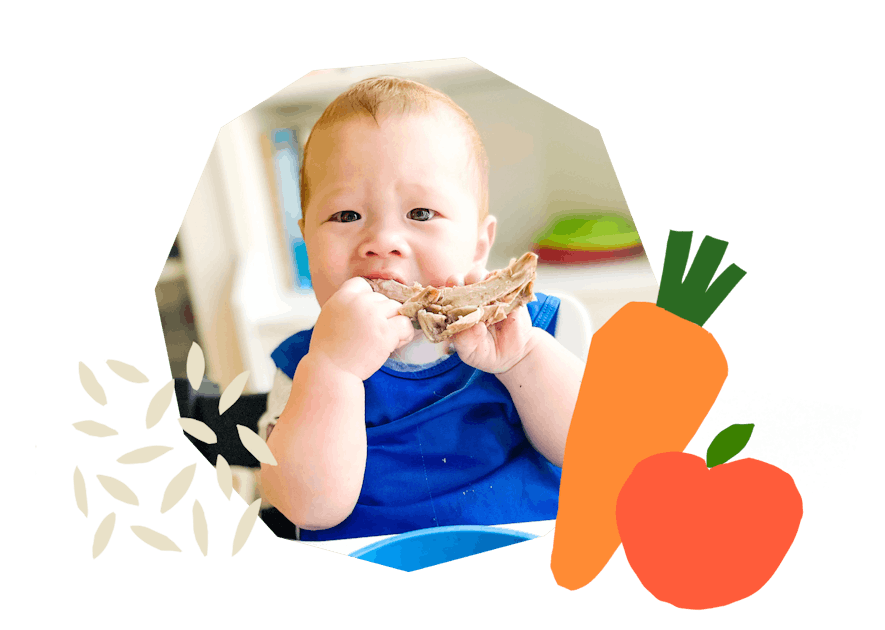
The Program Baby-Led Weaning with Katie Ferraro
A step-by-step digital program for starting solid foods safely and navigating the original 100 FIRST FOODS™ meal plan with baby-led weaning.
 EXPERT-LED, PROVEN APPROACH TO EATING REAL FOOD
EXPERT-LED, PROVEN APPROACH TO EATING REAL FOOD CONCISE VIDEO TRAININGS TO MASTER BABY-LED WEANING
CONCISE VIDEO TRAININGS TO MASTER BABY-LED WEANING 100 FIRST FOODS DAILY MEAL PLAN WITH FOOD PREP VIDEOS
100 FIRST FOODS DAILY MEAL PLAN WITH FOOD PREP VIDEOS
Baby-Led Weaning for Beginners Free Workshop
Is your baby ready to start solid foods, but you’re not sure where to start? Get ready to give your baby a solid foundation to a lifetime of loving real food…even if you’re feeling overwhelmed or confused about this next stage of infant feeding.
Get baby-led weaning recipes and tips delivered to your email inbox.



